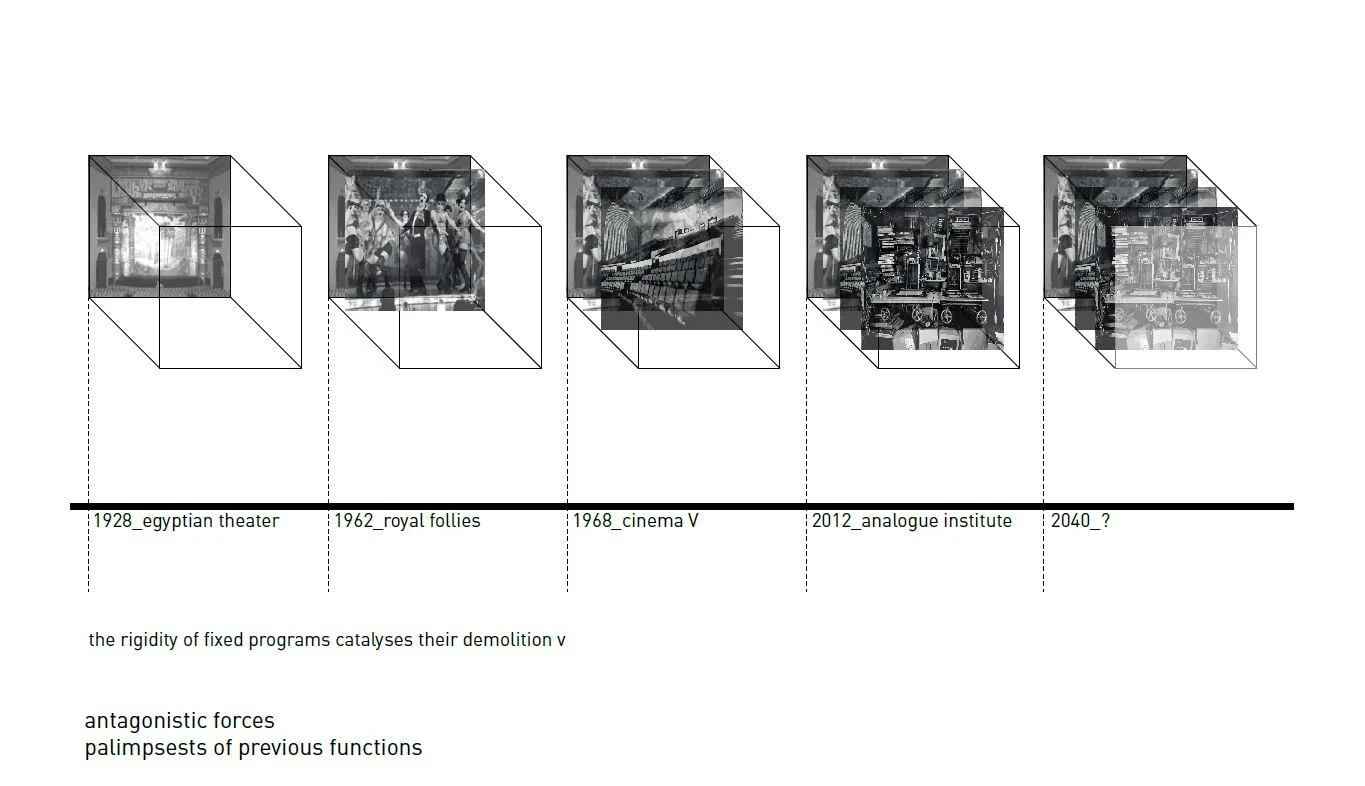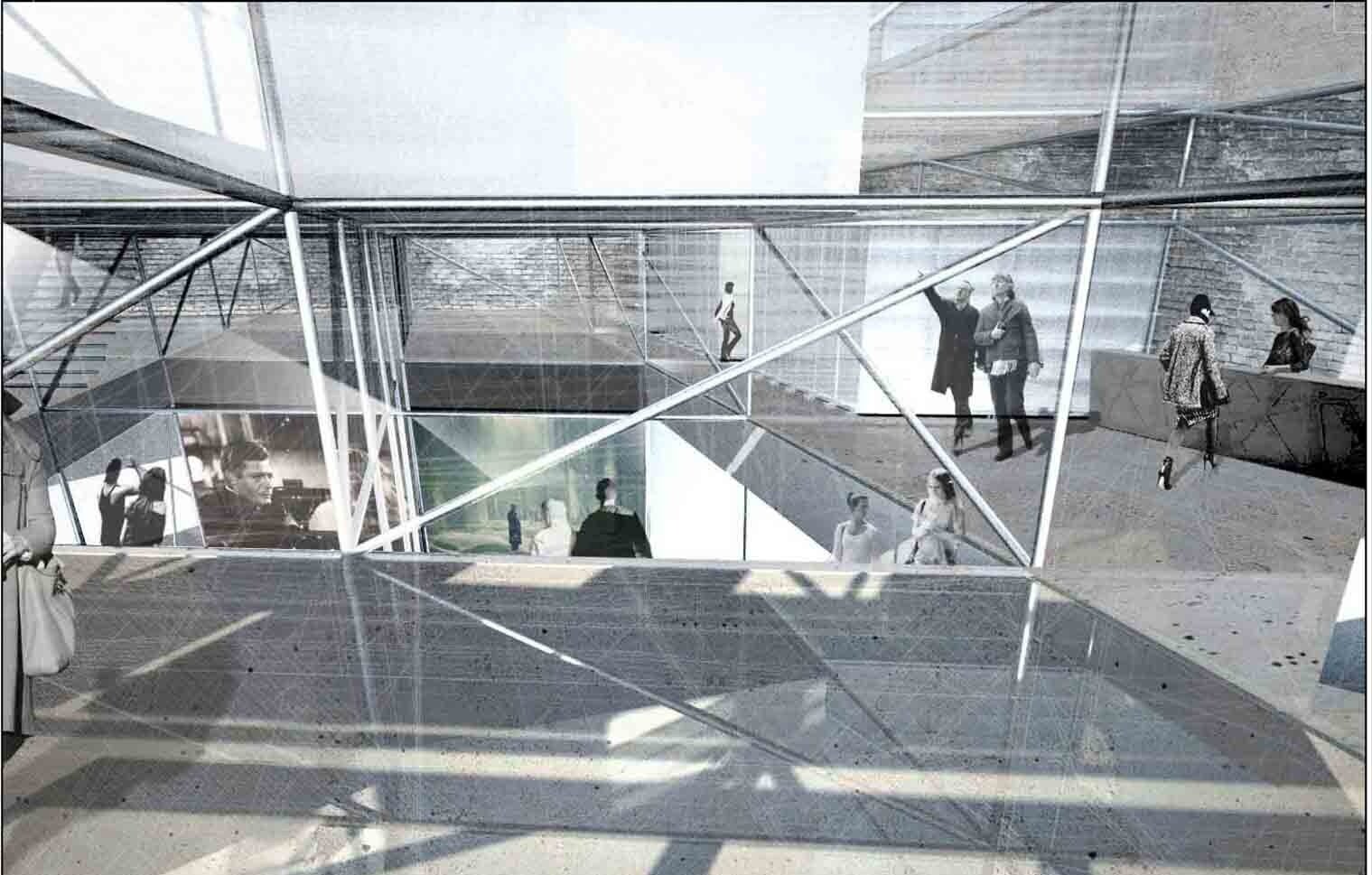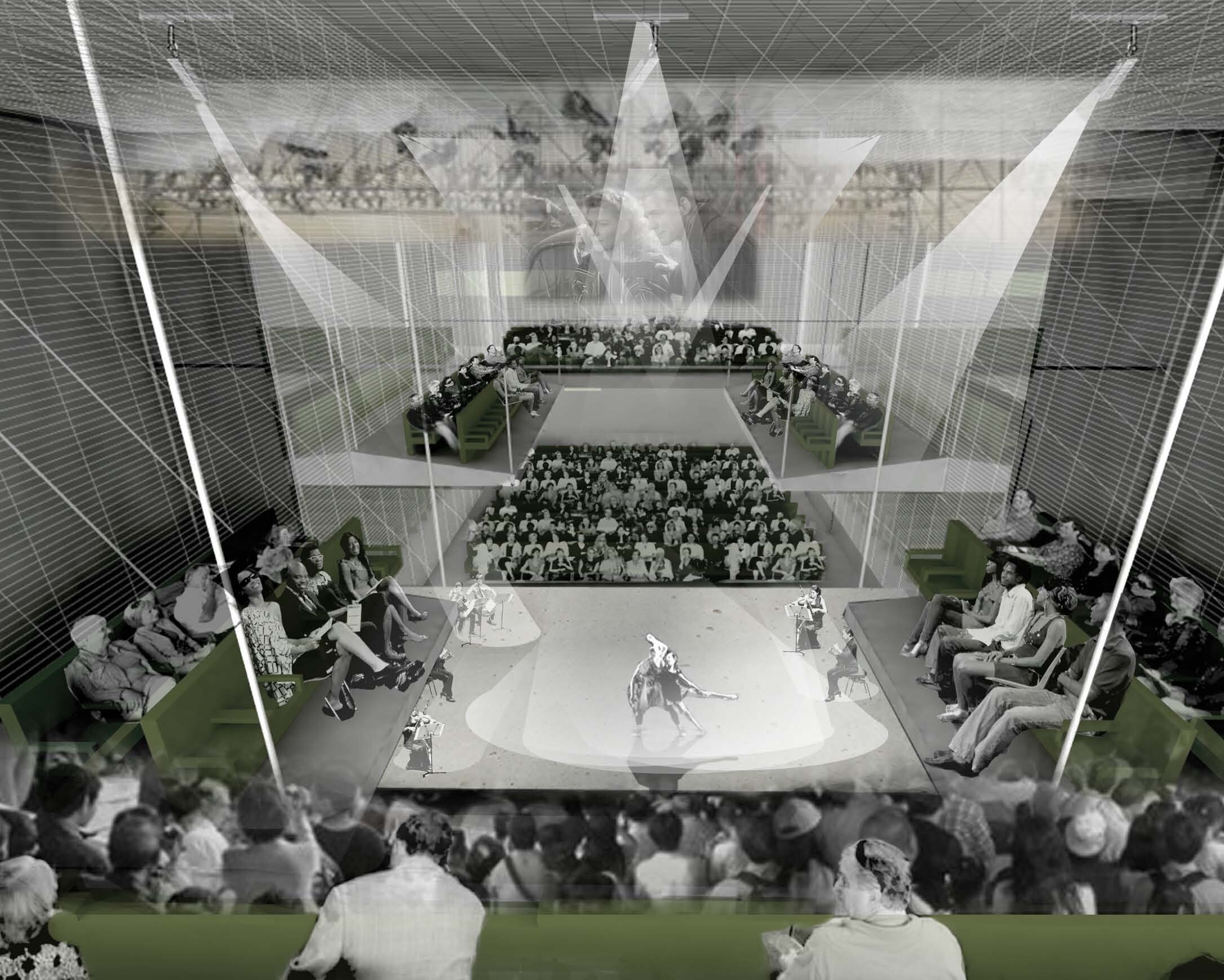












Empress Theater: The Analogue Institute
Dealing with architectural pace: An adaptive reuse project aiming to repurpose the Egyptian style Empress Theater into an analogue film institute. A glance at the Empress’ timeline reveals only one constant variable: a life characterized by change. In this way, the empress is recognized neither as a moment frozen in time, nor as break between before and after (responding to the exact needs of the moment), but as a moment in the continuous process of change. While styles are temporary, principles are not. Construction and decay, the two elements that co-exist in this vicious circle, render the actual existence of the structure transitory, as a means to serve the creation of this atmosphere: the place-ness of the event. Here, architecture is not an object of desire but an event, a performance that could end at any moment. This proposal reacts to the contemporary rehabilitation of historic buildings by recognizing (and accommodating) change as the only constant.
Programmatic Reaction
In this way, the empress is decomposed into a stable and a versatile element. At present, the base building, a shell or container, is the sole interface encountered by the younger generation in NDG; and thus, it remains the only recognizable social anchorage for the project. In this scheme, the Empress preserves its identity on the surface with a semi-permanent, autonomous scaffold structure to accommodate the evolving program of the analogue institute.
Designing for changeability requires looking at the program through the lens of permanence, establishing a timeline for the construction , assembly, degrees of changeability and eventually the decay of the analogue institute. Spaces of performance and spaces of production change, each at their respective pace. The adaptable scaffold structure allows for multiple scenarios to arise, of which one linear scenario has been developed under the scope of the Studio’s mandate. What remains clear in the end is that all aspects of a project are temporal in nature, no matter their position on the timeline of permanence.
A working section
The structure of the fitout is consisted of a scaffold system, with rosette disks supporting the clip-on posts at regular intervals, allowing for the versatility of the system’s configuration. Program is hung from the structure, offset within the grid of the scaffolding, as demonstrated on this page. The section displays the flexibility of the assembly space where it can be combined into one large performance space(above) or separated into a smaller performance space and a screening space(below). This arrangement allows the stages to be modified for unexpected scenarios.
Section 1Black box theater divided into two performance spacesSection 2Black box theater opened up for large performances
Project: Empress Theater: The Analogue Institute
Typology: Cultural
Location: Montreal, QC
Year: 2012
Status: Master’s Project



